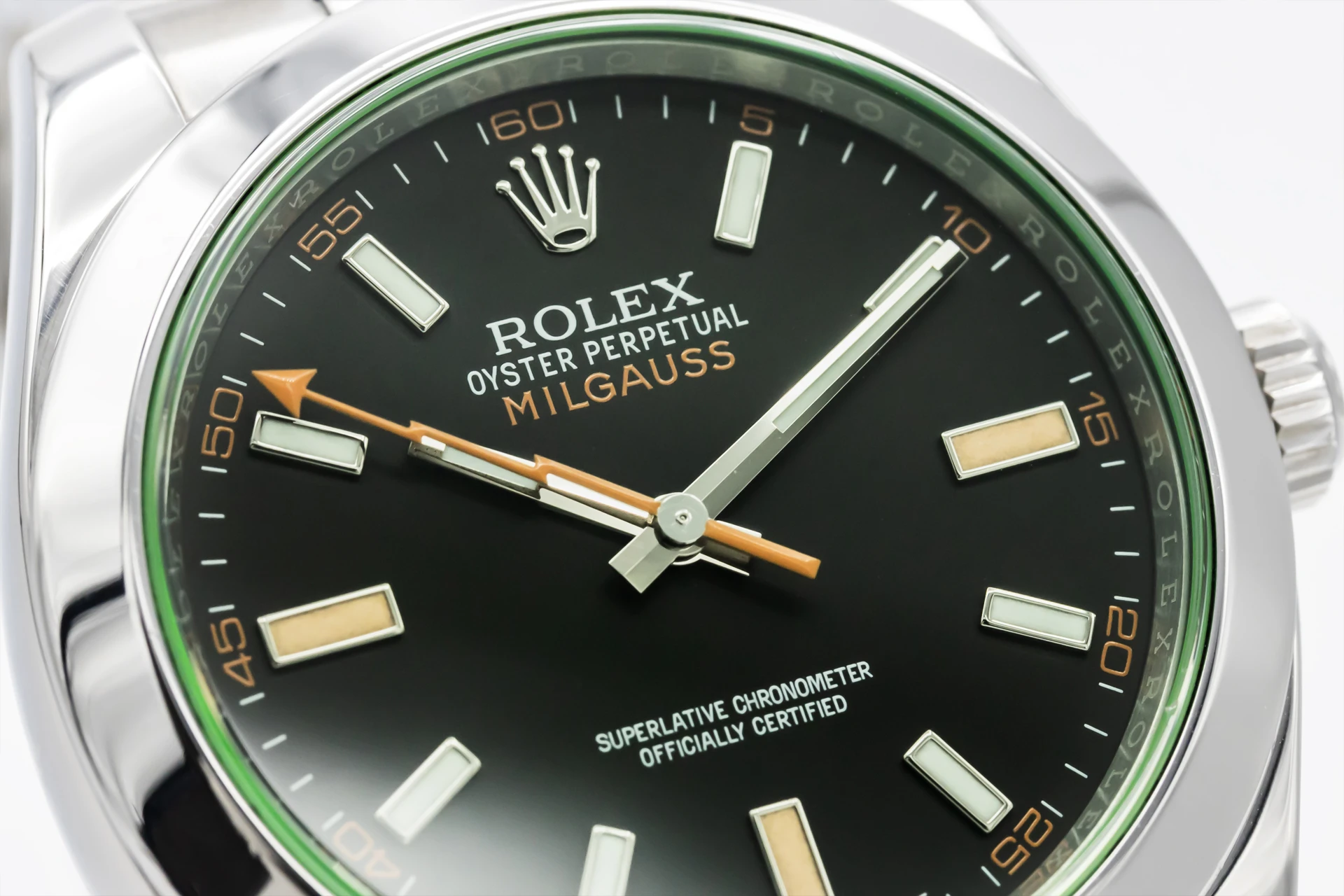




Rolex is known to create watches especially for sportsmen, adventurers and professionals. The Milgauss is no exception. Rolex Milgauss is a timepiece with a really interesting feature, it is an antimagnetic watch designed for professionals such as scientists.
The Milgauss was designed especially for professionals who worked in power plants, medical facilities, and research labs. Before Rolex released the Milgauss, these people had a serious problem; an electromagnetic field greater than 50 to 100 gauss would greatly disrupt the timing of a watch. In other words wearing a watch was completely useless. The release of the Milgauss changed that. Tested in the 1950s by the European Organization for Nuclear Research (CERN), the world's pre-eminent particle physics laboratory, it was determined that the Milgauss resisted magnetic fields up to 1,000 gauss. This was a huge technological advancement, not only for Rolex, but for the scientific community.
The name Milgauss actually represents this achievement! Mille comes from Latin and means one-thousand, and gauss is the name of the unit of a magnetic field. The scientific theme was set in stone when the Milgauss watch was worn by scientists at the European Organization for Nuclear Research in Geneva. If some of the world's top scientists utilized Rolex watches, why shouldn’t the rest?
The appearance of the original Milgauss was very similar to the Rolex Submariner. The original Milgauss features an oversized case and bezel, complete with the patented Twinlock crown, and a riveted Oyster bracelet. A special orange lightning bolt second hand has come to be one of the most recognizable features of the Milgauss. Combined with the watch’s bezel, the second hand can be stopped when setting time to ensure precise time setting. It is still featured on current models.
The Milgauss has a shorter history than many other Rolex’s models. Rolex only released two models of the Milgauss, with ref. numbers 6541 and a modified 1019. Ref. 1019 was released in the 1960s and 1970s, and only had a couple of changes from the original model. Unlike the original Milgauss, the 1019 offered two dial options; black and silver. Some 1019s were also released without the lightning bolt second hand.
Despite its incredible achievement and special features, the Milgauss line was discontinued in 1988. The Milgauss was almost forgotten for 20 years. Then, in 2007, Rolex revisited this amazing timepiece and released three new versions of the new model.
The new version of the Milgaus featured new technological advances. The new model includes a shield inside the Oyster case made of ferromagnetic alloys. This serves to increase the Milgauss’s resistance to magnetic fields . The shield surrounds and protects the movement, in order to ensure that it can run precisely. The current model is also equipped with a magnetic alloy Parachrom-Blue hairspring, which is finer than a human hair, but is resistant to magnetic fields and up to 10 times more resistant to shocks, such as from dropping the watch. To add on to the scientific theme, Rolex includes the symbol for magnetic flux density (the capital letter 'B' with an arrow) engraved in the magnetic shield.
The dial of the Miguass is black or white, but no matter the dial color, the new Milgauss features an orange second hand, shaped like a lightning bolt to echo the original model. Despite the 20 years break in the production, the Milgauss has remained faithful to its scientific heritage and is now regaining its popularity.
The Milgauss remains a highly sought after Rolex model. These factors contributing to this are the low amount of sales and popularity during the 1960s and 70s, which has made the original Milgauss very rare with special models selling for high prices. Also, the technological innovation, highlighted by its antimagnetic properties, have made this particular Rolex very unique, rare, and valuable.
Visit us in store for great service and to see our amazing collection.
114 Ballards Lane, Finchley Central, London 02088383655
